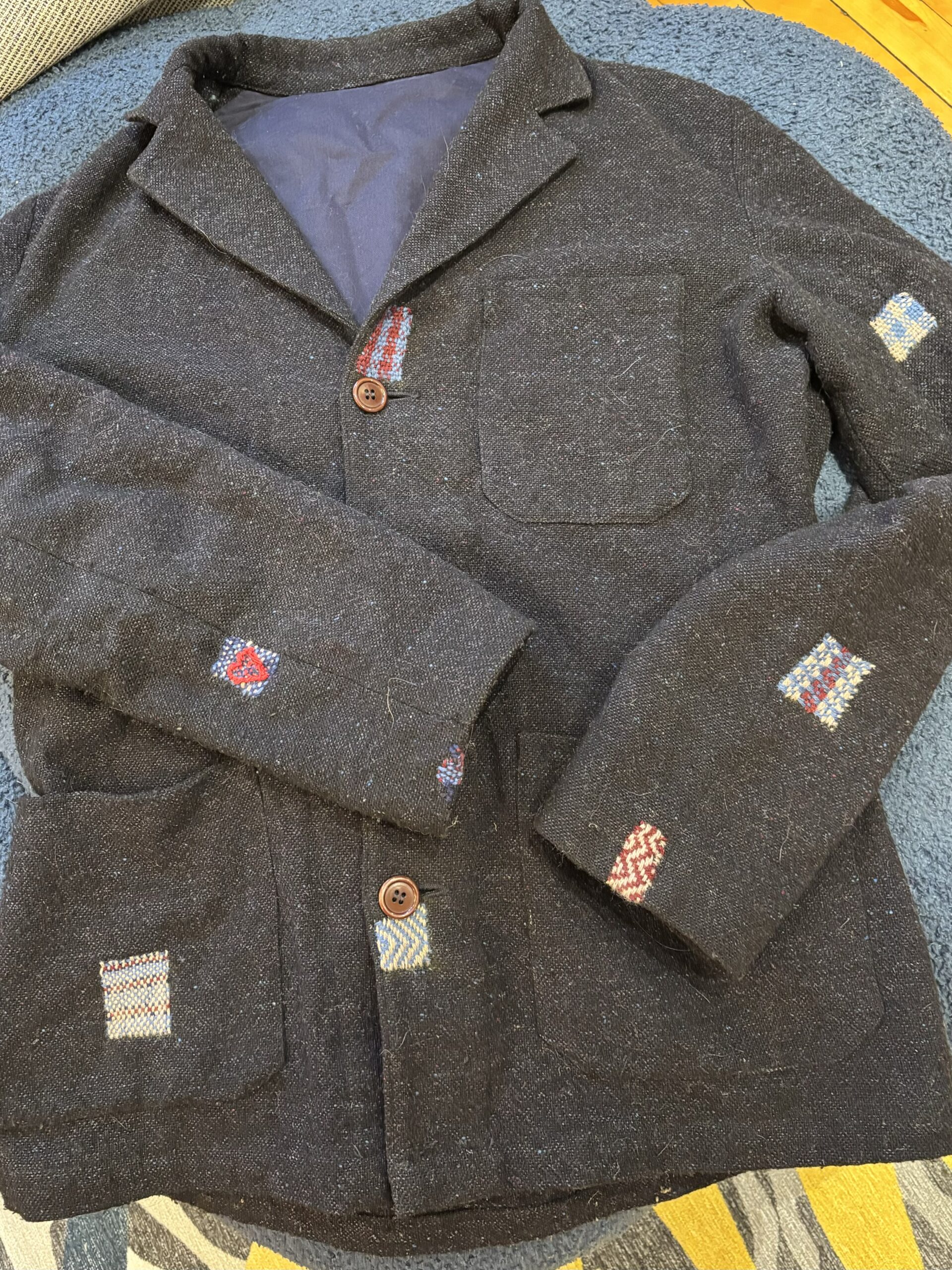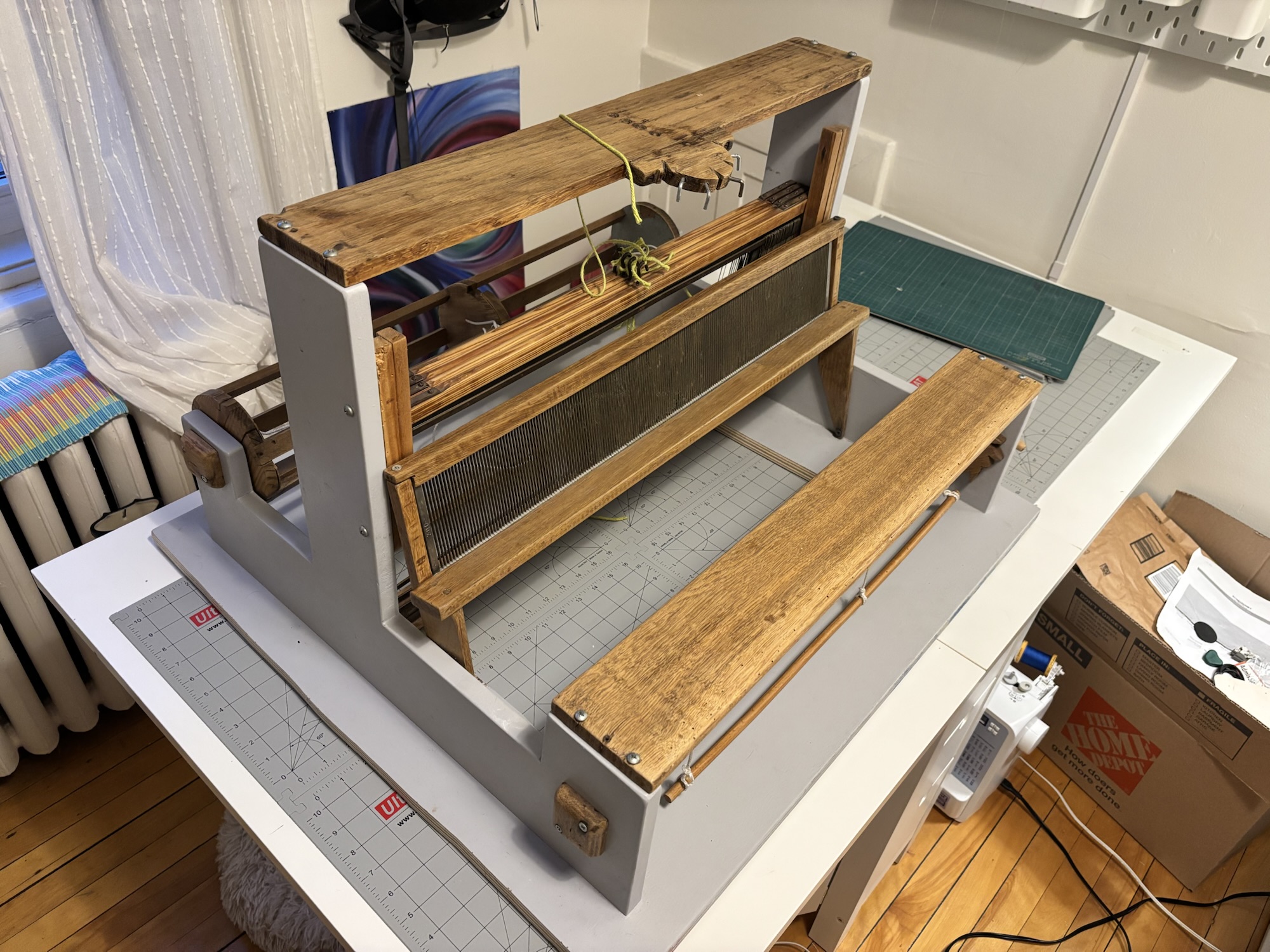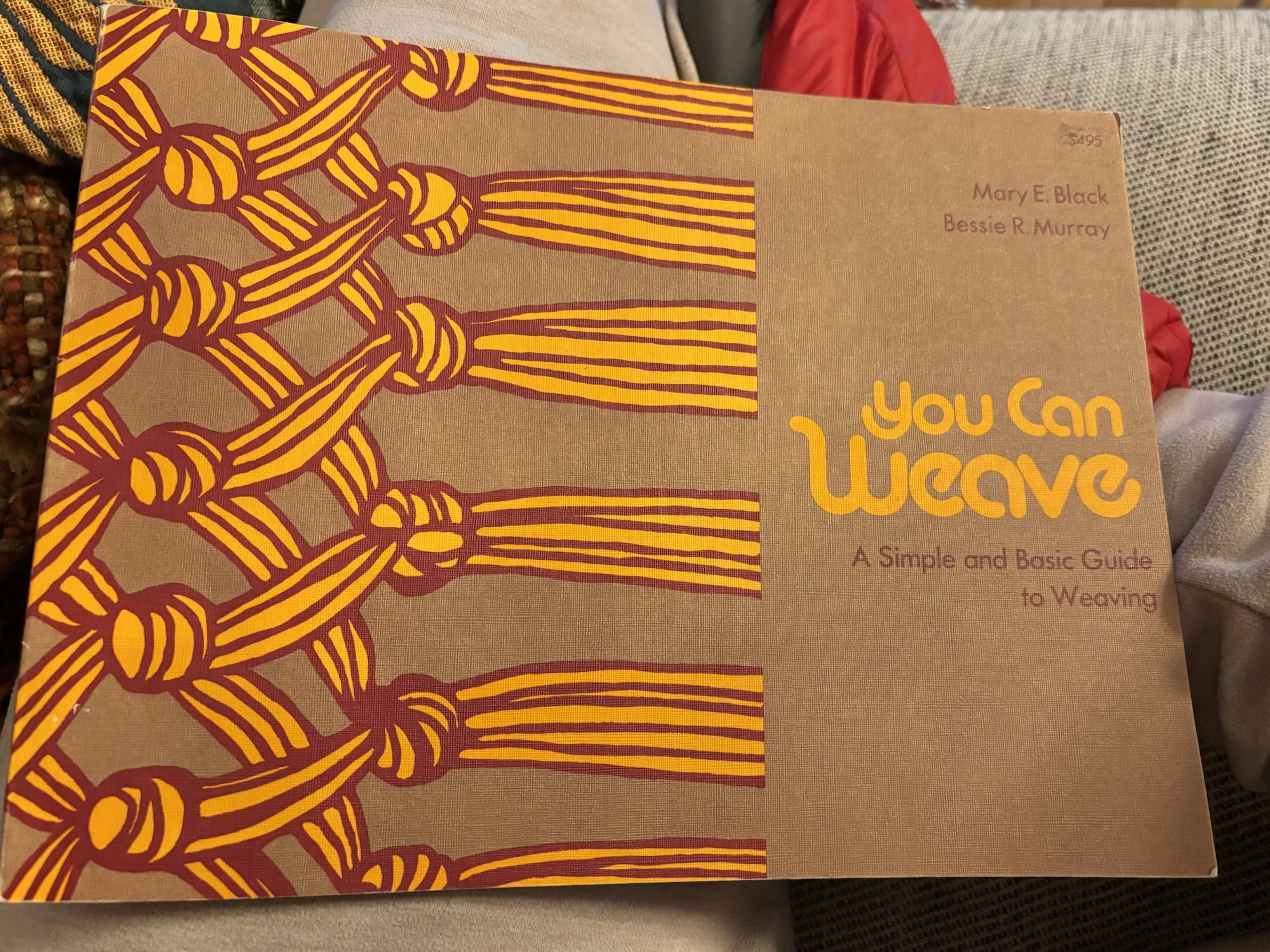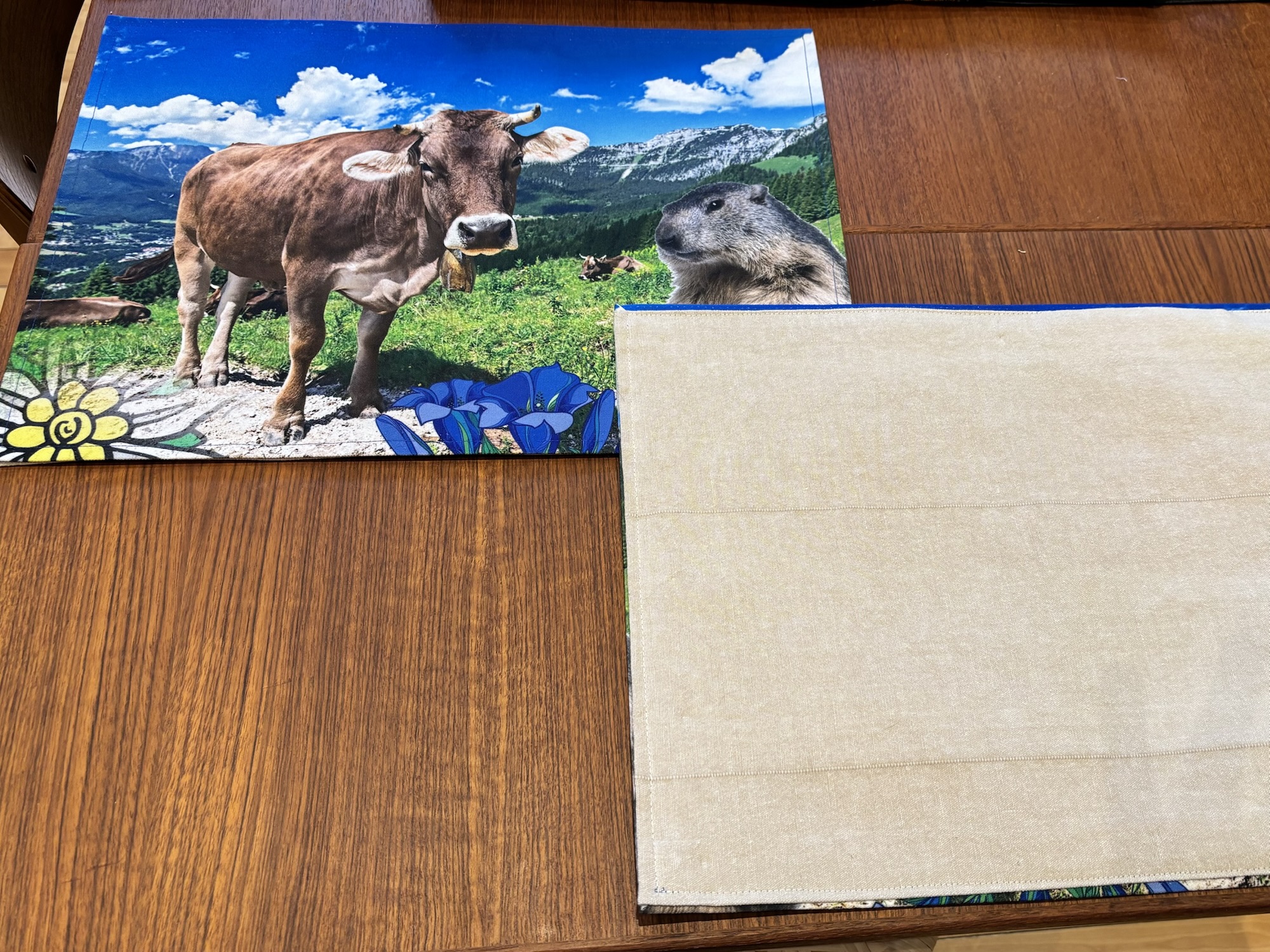
Tartan mania
I’ve been collecting archival information about my grandmother, Bessie Murray, and the Nova Scotia Tartan. I found this Macleans cover from 1957 in an old email from my dad, that […]
I’ve been collecting archival information about my grandmother, Bessie Murray, and the Nova Scotia Tartan. I found this Macleans cover from 1957 in an old email from my dad, that […]
Dressing the loom takes an eternity.
I break out my speedweve loom for the first time and make patches ’til the sheep come home
I detail my plans for creating a Montreal Tartan, and make my first warp– that’s the long vertical threads– for the loom, with Penelope’s help.
My new-old loom needs some work to make it usable. It also gets a new name.
In which I go out and find myself a loom, and wonder how my grandmother would have handled the Internet.
In which I embark on a major project to learn from a book my grandmother co-wrote, in 1974.
A couple of years ago in Slovenia, we bought these weird placemats that show a cow in the alps, with some hand drawn floral art, and then, inexplicably, a gopher photoshopped into the foreground. But they needed some work…
In which I finally get my space set up to sew without using paper patterns, and find a new lease on life… maybe?







